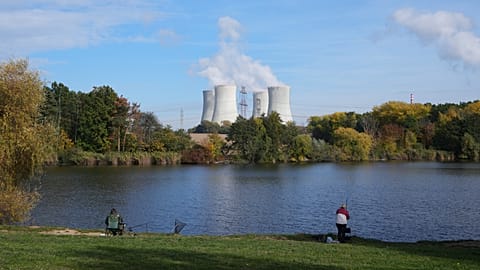Despite being one of the largest natural carbon sinks, most nations exclude soil from their climate plans.
The key to meeting global climate targets may have been right beneath our feet this entire time.
As COP30 enters its final week of negotiations, pressure to transition from fossil fuels, bolster renewable energy and even remove meat from our diets has reached an all-time high.
The EU Commission says it is using the annual event to push the international community to “strive for bolder action” to cut emissions and adapt to the impact of the climate crisis.
But, to meet the Paris Agreement and stop global temperatures from exceeding 2℃, and preferably to 1.5℃, leaders are being urged to look to the planet’s "quiet infrastructure”: soil.
How can soil help tackle the climate crisis?
For years, environmental action has long ignored the importance of soil, resulting in it being almost invisible in global policy. Very few countries mention it in their national climate plans.
But, as scientists start to dig a little deeper, the power of soil is finally getting the attention it deserves.
In 2015, soil was put under the spotlight at the UN climate summit stage when France debuted its four per 1,000 initiative during COP21. This initiative argues how if global agricultural soils increased their carbon stocks by just 0.4 per cent per year, it could offset nearly all annual greenhouse gas emissions.
Responsible for feeding almost the entire planet and regulating water cycles that can help tackle both droughts and floods, soil is the biggest natural carbon sink in the world.
In fact, there is twice as much carbon stored in soil as there is in all vegetation on Earth - including trees and grass.
However, it is only healthy soil that sequesters carbon, while degraded soils release greenhouse gases into the atmosphere.
Soil could cut emissions by 27 per cent
A report released today found that soils store more than 2,800 gigatonnes of carbon in the top one metre.
This is a stark increase compared to earlier estimates of 1,500 gigatonnes, meaning soils store 45 per cent more carbon than we previously thought.
The report, from Aroura Soil Security Think Tank, the IUCN World Commission on Environmental Law (WCEL), and the Save Soil campaign, also found that 27 per cent of carbon emissions needed to keep global warming below 2℃ can be sequestered in soils (providing they’re in good condition).
This is around 3.38 gigatonnes of CO₂ per year. To put this into context, global annual emissions from fossil fuels in 2022 reached 36.8 gigatons.
Despite this, a staggering 70 per cent of nations ignore soil restoration as a climate mitigation solution in their national climate plans for 2035, also known as National Determined Contributions (NDCs).
Experts are now calling for countries to commit to intentionally enhancing soil carbon as part of international climate action - arguing we have a “generational responsibility” to prevent degradation.
‘A living entity’
“If we want to meet our emissions targets, we must consider soil as a living entity,” says Praveena Sridhar, CTO of the Save Soil movement and co-author of the report.
“For too long, soil has been treated as dirt. However, it is the living skin of the planet. Every handful of healthy, living soil is a microcosm of life and a storehouse of carbon and water.”
Sridhar argues that securing soil health is not just an environmental duty but a “generational responsibility” that is essential to climate change mitigation.
The cost of degraded soil
Current rates of degradation risk huge carbon reservoirs in soils being released into the atmosphere to the tune of 4.81 billion tonnes of CO₂ each year - approximately the same annual emissions of the US.
While 40 per cent of Earth’s land is already degraded, the UN Food and Agriculture Organisation predicts this could climb to 90 per cent by 2050.
The report warns that current CO₂ emissions from US soils alone equate to around 75 million cars. If just one per cent of the carbon in Europe’s soils were to be released, it would be equivalent to the annual emissions of one billion cars.
How to stop soil degradation
Soil degradation is often the fault of unsustainable farming practices, deforestation, overgrazing and intensive agriculture. It can also be caused by natural factors such as soil erosion from wind and rain.
Using sustainable farming practices like crop rotation and cover crops (which add organic matter to the soil and improve its structure) can help soil remain healthy. On a smaller scale, opting to add compost to your garden and avoiding chemicals can also prevent degradation.
Why soil security needs ‘concerted action’
“Without specific targets for soil protection and restoration, countries rarely prioritise it in their climate acts,” says Dr Irene Heuser of IUCN WCEL and Sustainable Agriculture Law Group.
“There’s no specific comprehensive international treaty or other binding legal instrument for soil security. Soil security requires concerted action by policy makers, by farmers, by companies, by consumers etc. to promote soil security, including soil health.”
Heuser adds that it is therefore “essential” to change the current legal status of soil to secure it for future generations.


















